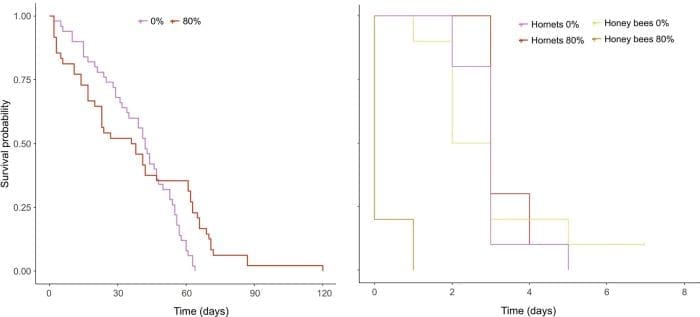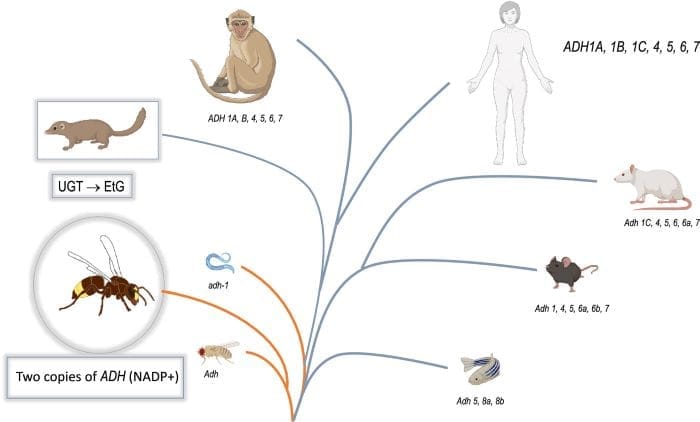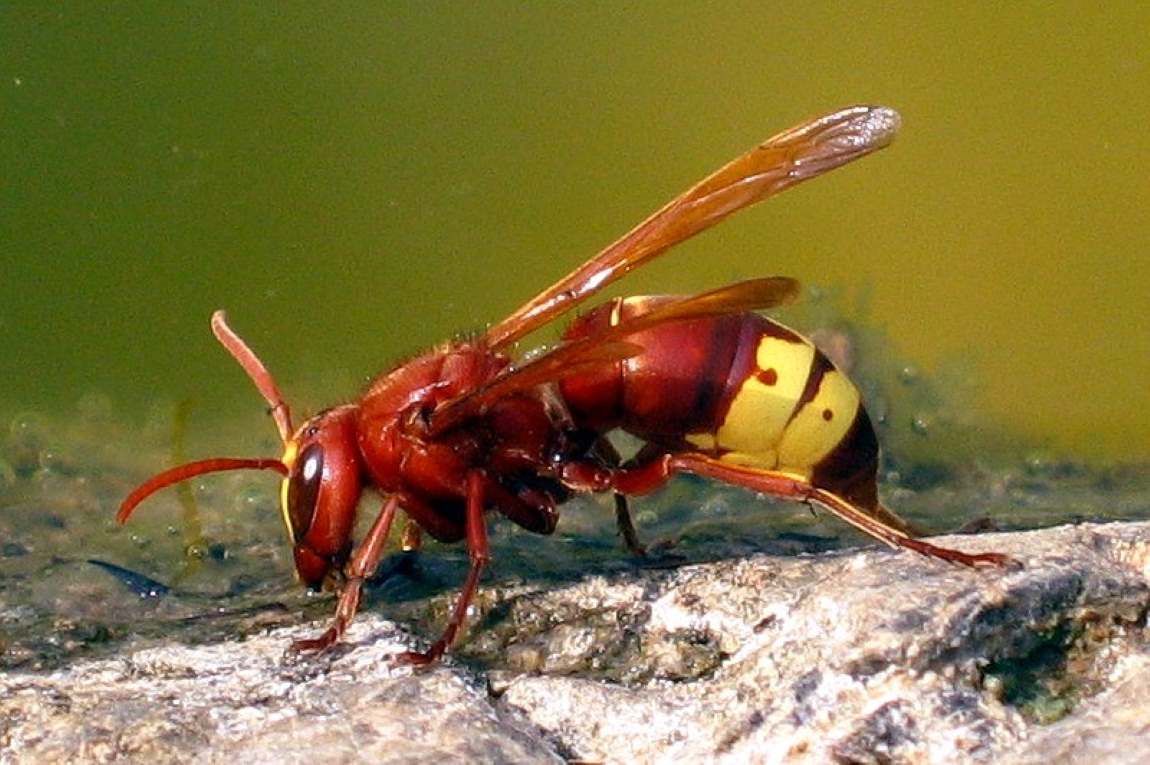On a warm summer evening, humans enjoying a drink outdoors might share their glass with an unlikely visitor – a wasp. While most animals, including bees, avoid alcohol due to its adverse effects, wasps appear drawn to it, readily tolerating what would be a dangerous dose for many other species.
Recent research1 from Tel Aviv University, published in Proceedings of the National Academy of Sciences (PNAS), reveals that Oriental hornets possess an exceptional ability to consume and metabolize extremely high concentrations of ethanol without harm, offering intriguing insights into how different species handle alcohol.
This surprising discovery has garnered further interest through a PNAS commentary2 exploring the broader implications of such resilience. It highlights that, although many species occasionally consume fermented fruits and nectar, few have evolved the level of tolerance seen in Oriental hornets.
The commentary raises the question: if wasps can process such high levels of alcohol, could this teach us anything about human alcohol tolerance and potential treatments for alcohol use disorders?
A taste for alcohol – a curious evolutionary trait
The researchers, led by Eran Levin at Tel Aviv University, observed that Oriental hornets exhibited an astonishing capacity to consume ethanol without experiencing negative behavioral or physiological consequences, even at concentrations reaching 80% – levels far beyond what most animals could survive.

“These hornets can ingest up to 80% ethanol solution without any negative effects on their mortality or behavior,” explains Sophia Bouchebti, one of the study1’s authors. Bees, by contrast, succumbed within a day when exposed to far lower doses, suffering severe impairments in movement and social interaction.
The hornets’ tolerance appears to stem from a unique adaptation at the genetic level. Oriental hornets carry multiple copies of the alcohol dehydrogenase (ADH) gene, enabling them to break down ethanol far more efficiently than other species. This enzyme, also present in humans, plays a critical role in converting alcohol to a less harmful compound. Yet even the most tolerant humans would likely perish from doses the hornets readily consume.
The research indicates that the hornets’ ADH genes are highly active, giving them an unparalleled ability to metabolize ethanol quickly – a crucial advantage in their natural habitat, where they often encounter fermenting fruits and nectar as food sources.
Alcohol tolerance in the animal kingdom
The commentary2 by Prof. Dr. Rainer Spanagel, a psychopharmacology expert and Scientific Director at Institute for Psychopharmacology, Germany, provides context for understanding alcohol tolerance across species, noting that humans are not alone in encountering ethanol in nature.
As Dr. Spanagel discusses, animals such as tree shrews and fruit flies exhibit similarly high tolerance to ethanol, which appears in many natural environments, from fermented fruit to alcoholic nectar sources. In his commentary, Spanagel explains that ethanol-producing plants and yeasts have coexisted with animals for millions of years, leading many species to develop enzymes capable of breaking down alcohol.

These differences in alcohol tolerance have genetic roots. In humans, for example, variations in ADH genes influence alcohol processing, with some individuals experiencing unpleasant reactions due to a rapid accumulation of acetaldehyde – a byproduct of alcohol breakdown that can cause symptoms like facial flushing and nausea. In East Asia, a fast-acting variant of the ADH1B gene has evolved, leading to quick ethanol metabolism but also to acetaldehyde buildup, which discourages excessive consumption and lowers the risk of alcohol dependency.
In contrast, Oriental hornets seem to have evolved a super-efficient ADH system that keeps up with ethanol intake, neutralizing its effects with no detectable impairment in behavior or health.
Implications for human alcohol research
Understanding how certain species process alcohol could hold implications for human health.
Alcohol use disorders (AUDs) remain a major public health challenge, and treatments often focus on reducing alcohol cravings or increasing sensitivity to its effects.
Dr. Spanagel points out that studying animals like the Oriental hornet could inspire new pharmacological approaches for managing AUDs by identifying genetic and enzymatic pathways that enhance alcohol metabolism.
While Oriental hornets may be a nuisance to outdoor diners, their resilience to alcohol offers a glimpse into nature’s diverse and adaptive responses to environmental challenges. By examining these responses, researchers may gain a better understanding of alcohol tolerance, potentially offering new perspectives on managing alcohol use in humans.
Journal References:
1. S. Bouchebti, Y. Gershon, A. Gordin, D. Huchon, E. Levin, ‘Tolerance and efficient metabolization of extremely high ethanol concentrations by a social wasp’, Proceedings of the National Academy of Sciences 121 (44) e2410874121 (2024). DOI: 10.1073/pnas.2410874121
2. R. Spanagel, ‘How to survive enormous amounts of alcohol’, Proceedings of the National Academy of Sciences 121 (46) e2420068121 (2024). DOI: 10.1073/pnas.2420068121
Featured image: Oriental Hornet (Vespa orientalis) drinking water. Credit: Stavros Markopoulos | Flickr | CC BY-NC-ND




